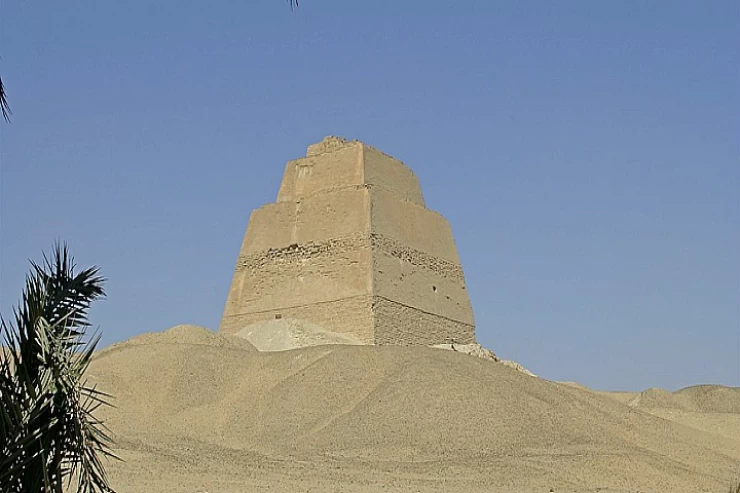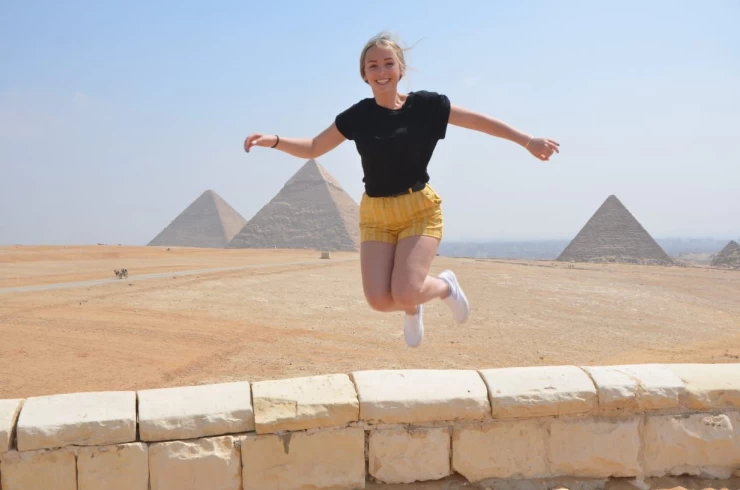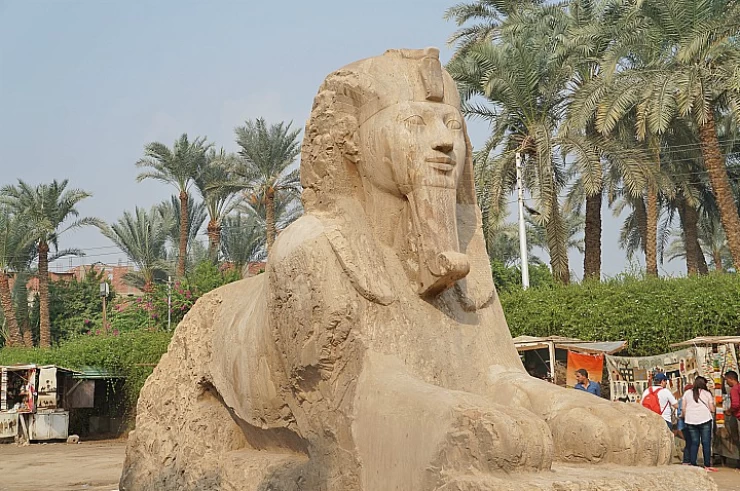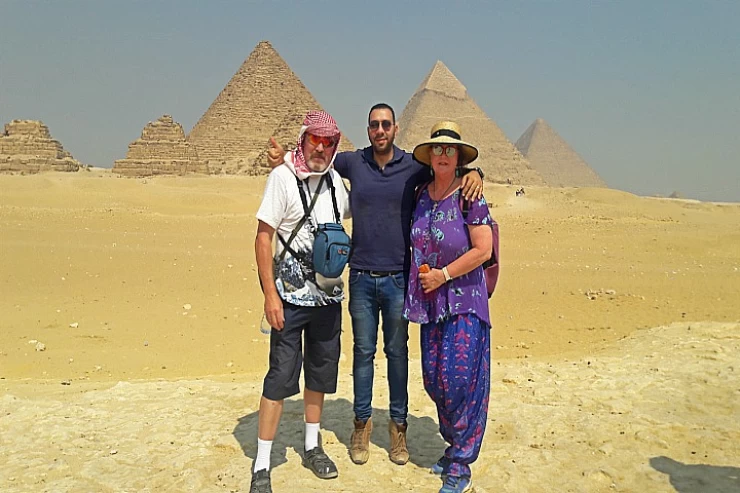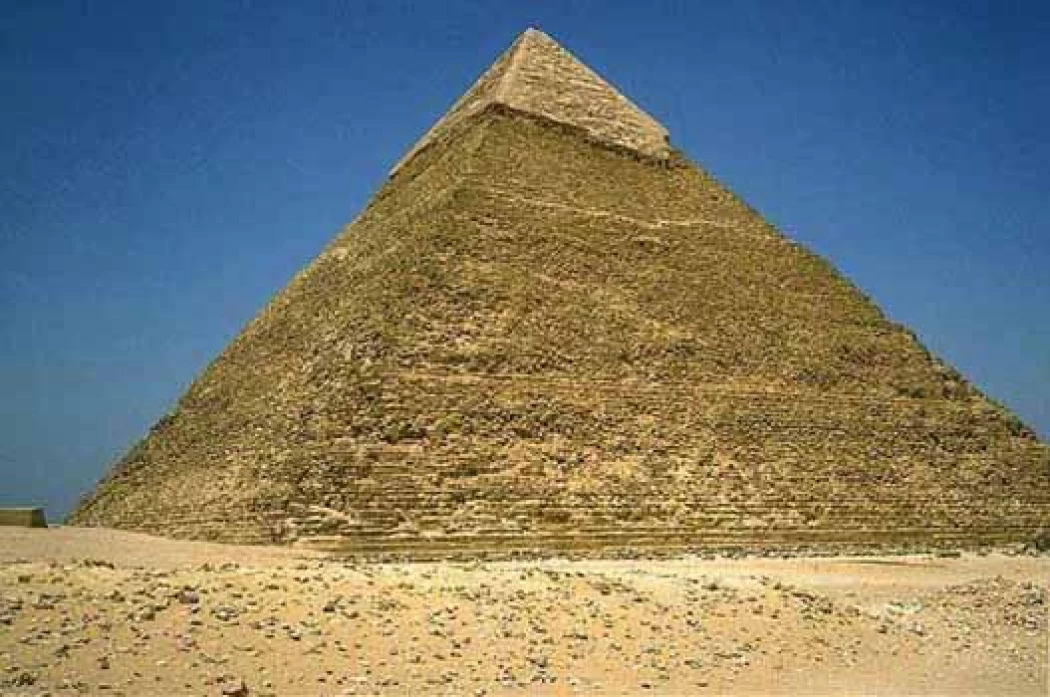
the great pyramid for the King Khufu
King Khufu and his Great Pyramid.
When speaking in terms of history, Egypt is the very first place that springs to mind. In case we do keep in mind the marvels of the earth, the pyramids at Giza will surely find mention, for they have a prime position among the most monumental legacies we have been left by the pharaohs, and equally one of the most visited by tourists from all walks of life.
Are the Pyramids of Giza the first pyramids in the world?
The step pyramid, as it may be called, is said to belong to the grandfather of King Khufu, a third dynasty founder. Snefru, during his reign was a man who trafficked; more than one pyramid had been built by him, such as the Red Pyramid, although they could not compare to the one built by his son, King Khufu.
Who is King Cheops?
There were different opinions about Khufu's father and mother, and they remained in doubt for a long time.
Until they found tomb that makes them think Snefru's wife was Khufu's mother.
Researchers disagreed on the length of Khufu's reign, each saying he ruled for various years, including Herodotus, who visited Egypt, and Maniton, who categorized the pharaohs into dynasties.
Khufu made several trade trips to Sinai to get the turquoise there. During the reign of Khufu, he was also given the position of minister.
He was also interested in mines and metals, which indicates that his reign was a period of prosperity in ancient Egypt.
Cheops achievements
His first and foremost accomplishment is the Great Pyramid, one of the Seven Wonders of the Ancient World, and the solitary one standing today; this pyramid being named the Horizon of Khufu means that it was the king's tomb, so, therefore, the Great Pyramid is not only the largest pyramid in the world, but it is also the largest tomb in history.
The pyramid is currently about 10 m. It was originally much taller but has been reduced in length due to weathering and erosion. Historical proofs show that he used about 5 million stones and more than 20,000 men to construct the Great Pyramid. This proves the difficulty of constructing this pyramid; the pyramid is a bit of a marvel, to say the least.
The pyramid was built from various stones such as limestone and granite that were brought from Upper Egypt, as for the Egyptian builders who built the pyramid, they were well-treated. This indicates the importance of constructing this pyramid for King Khufu, who provided the builders with all possible tools to help them build the pyramid, whether physically, like treating the broken bones of some of the builders.
He provided them and their families with shelter, food, and everything they needed to finish building the pyramid to perfection.
The Great Pyramid is not the same as the vision, because the top has been destroyed.
Khufu was a very intelligent king who built the Great Pyramid away from the Nile so that it would not be destroyed by flooding. Also, this desert land is hard and can withstand whatever the mass of the object on it is, no matter how big it is.
The best-kept secret of this pyramid is that to this day no one knows the grave of King Khufu.
Is it inside the pyramid or elsewhere?
Was it stolen in later eras, or did he hide it to prevent it from being stolen?
What we do know is that no one knows where the sarcophagus of the king of the Great Pyramid is located. Perhaps King Khufu had a forward-looking eye and knew that one day the tomb would be robbed. An amazement in itself is King Khufu, an equally great wonder in history.
You can enter the pyramid from the north side, which did not exist in the days of the Pharaohs but was made during the reign of Caliph al-Ma'mun.
In addition, there is only the base of the funerary temple of King Khufu.
Historical documents reported some other achievements and inscriptions of this king, for example, in the Dendera temple, it is described that a temple was built in this place before the Ptolemies built this temple.
He also has a statue in the temple of Abydos in Upper Egypt. This statue is the only complete statue that we know what King Khufu looked like; he built a tourist attraction that is considered one of the greatest in history. of course, we have found other statues, but nothing like this one, which is currently in the Egyptian Museum in Cairo.
The Pharaohs wrote history and left us monuments that are a great civilization witnessed by the world as one of the greatest and oldest civilizations in history. Khufu left us with one of the best achievements in the history of the pharaohs.
At present, the Great Pyramid stands as an assurance of Khufu's vision and the ingenuity of the ancient Egyptian civilization. Whether it is divine supremacy or a human marvel, such grandiosity and mysterious features in this grand work draw millions of people who marvel at its bared beauty and the secrets it keeps within.
Although the reign of King Khufu ended over 4,500 years ago, his very shadow is felt through time and ensures that he remains one of the most enigmatic and most ambitious rulers of ancient Egypt.
Contrary to his gigantic pyramid, not much is known about the personality of Khufu. His ruling has been reported in varied ancient sources: while some describe him as a stern and despotic king, others report him as a just and god-fearing leader. The only extant life-size statue of Khufu, carved in ivory, has been discovered from Abydos and serves as rare evidence of the appearance of this ruler.
It can be so difficult to imagine such an immense structure; the fact that the whole of London's parliament and Saint Paul's Cathedral could be contained there comfortably may perhaps help you get an idea.
Napoleon Bonaparte, the passionate admirer of Egyptian antiquities, was so impressed by his visit to the plateau of Giza that (thanks to the help of his mathematicians) he was able to officially announce that in the three pyramids, there was enough stone to build a three-meter-high wall that surrounded the whole territory of France.
The Great Pyramid is, among all, the one aligned most precisely. It is clear that the orientation had to be very important for engineers and supervisors. However, we do not know for sure if such precision was a practical response to the Bent Pyramid in Dahshur and Meidum accidents, or if at the base there was simply a religious need that made it necessary to align the funeral chamber (and consequently the body of the deceased pharaoh).
Here, Cheops was to be buried for eternity in his Aswan red granite sarcophagus. However, some Egyptologists believe that all three rooms were part of the original plan; in particular, the "Queen's Chamber" would have served as a serdab room, in which a statue of the late pharaoh was to serve as a substitute for his body. Five rooms were built above the "King's Chamber" to lighten the structure, an innovation that served to distribute the load of the pyramid that would otherwise have overloaded the ceiling of the burial chamber. Without worrying about understanding the key terms of Egyptian history, we will see an Egyptologist guide, who will meet your expectations.







